The artistic duo Bertozzi & Casoni, composed of Giampaolo Bertozzi (Borgo Tossignano, 1957) and Stefano Dal Monte Casoni (Lugo, 1961), is one of the most important names in international contemporary ceramics. A fundamental characteristic of their art is their ability to bind themselves to tradition in order to address eternal themes of art (such as those of time and the transience of life) in very current forms. With Giampaolo Bertozzi, we started from their most recent exhibition, entitled Proprio Tempo (curated by Mauro Daniele Lucchesi and Alessandro Romanini, at the Sant’Agostino complex in Pietrasanta until February 7, 2021), to talk about their art also in relation to the latest current events. The interview is curated by Federico Giannini.
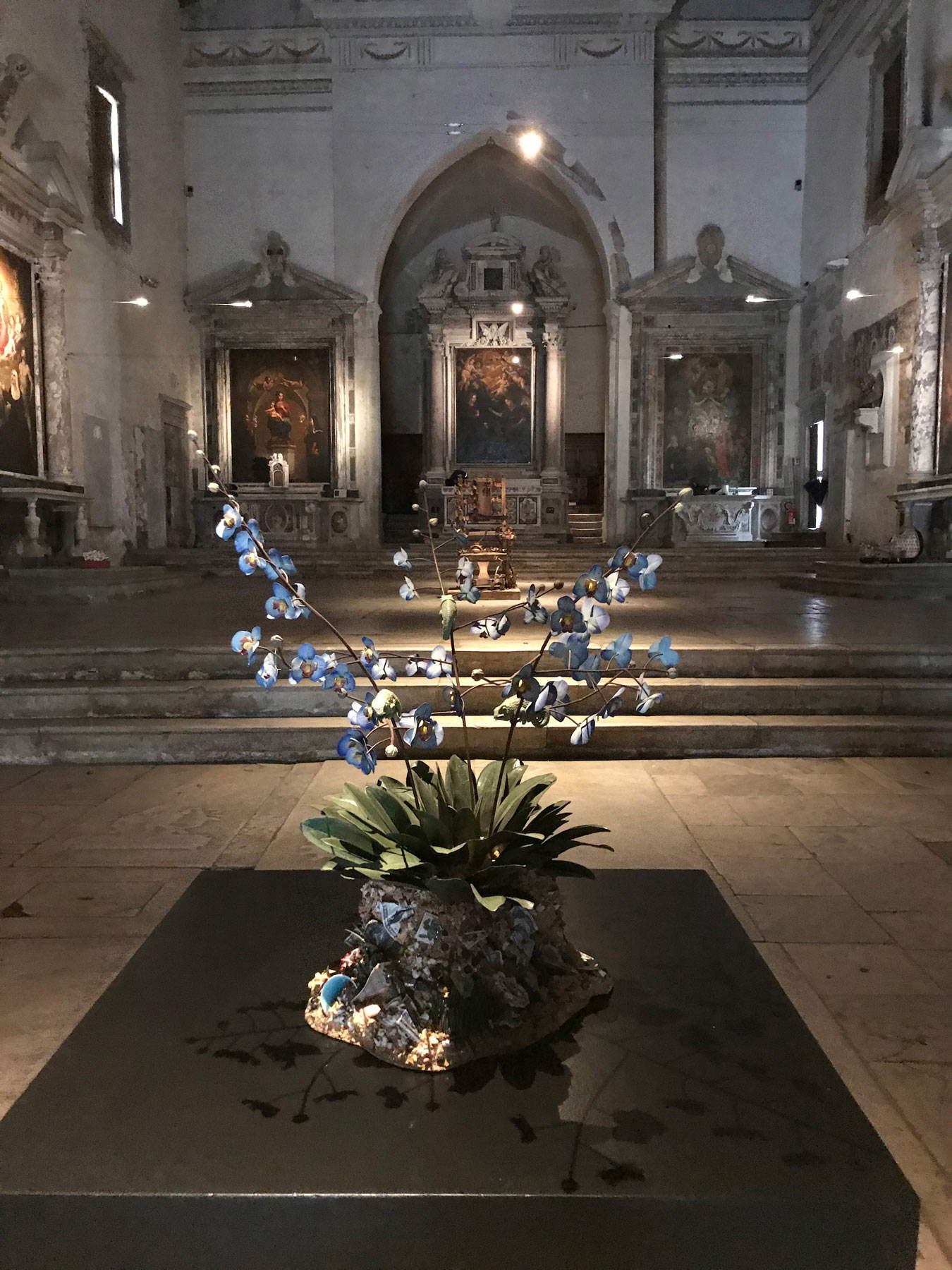 |
| Setting up the exhibition Tempo in Pietrasanta |
FG. Let’s start with the Pietrasanta exhibition, which has a very appropriate title for the situation we are living in, since it is called Tempo. Time is not only what the exhibition did not have, since after two weeks the government closed all the cultural venues (and we therefore hope that they will be reopened as soon as possible so that people can go to see the exhibition), but it is also the dimension on which the events of the last few months have forced us to think. But beyond contingencies, what prompted you to dedicate an exhibition to time?
GB. The venue of the exhibition, the church of St. Augustine, influenced this choice, which brought us closer to some themes present from the beginning in our artistic work, but not only that, it also made us think about Ecclesiastes with a series of considerations on “time” that to some extent reinforce the themes we have included in our compositions. Topics that we habitually introduce in our work, references to the tradition of art such as memento mori and vanitas, which have been a constant in our artistic work. Being linked to the time that passes, to what man leaves behind after his passage through the time in which he lives, aware of the intangibility of “time,” has always been a very important theme for us. A dimension, “time,” to which we humans have given a kind of order, which, however, on closer inspection, is an impregnable concept, almost a dogma on a par with faith. The Church has dealt so much with these issues, in all ages, that it seemed almost natural to dedicate an exhibition to “time” and, more importantly, in a church that, although closed to worship, still on consecrated ground.
You have, indeed, often worked on the theme of the ephemeral: even in Pietrasanta we see several of your modern vanitas, but which are rooted in the history of art (and to this, moreover, I would like to return later). The theme of the transience of life has often animated your work: that of our finiteness is a topic that seems to have dropped off our radar, since today we live as if projected into a continuous present and we care little about what will happen even long after us. And that’s kind of what seems to shine through in your works.
Yes, as artists we register this fact, the triumph of externality, of the here and now, of the perfect body, of everything that seems imperishable but actually is not. Since the early 1980s, so since the beginning of our journey, we have always reasoned in this sense, about the sense of transience. Perhaps this attitude goes back to our schooling, which took place in the late 1970s in Faenza, at the Istituto Statale d’Arte per la Ceramica, then a school of great educational level. I remember that many foreign students (Japanese, American, German) were finishing or refining their schooling in Faenza, and a very interesting and stimulating climate was created from a cultural exchange point of view. The school had next door the current International Museum of Ceramics, one of the most important museums in the world on ceramics, where we could study on the “field” both the history of ceramics and the history of art. It was during this school period that I became acquainted with the artist Bernard Palissy, born in the early sixteenth century and the author of a small revolution in ceramics. He began making the first casts on small amphibians and reptiles, giving his compositions an appearance so real that in those years it was almost an alchemy. So our interest stems from looking at and revisiting all that is the tradition of ceramic history, and Palissy’s compositions led precisely to reflections on the transience and finiteness of life, themes taken up by Art history in the next century with the memento mori and vanitas.
We have mentioned Bernard Palissy but your work is full of references, in Pietrasanta for example there are skulls with Pinocchio’s nose, on which parrots perch, which make you think of De Dominicis, and then Andy Warhol, Arcimboldo, still lifes of the seventeenth century... what is your relationship with art history?
We think that everything that can be renewed in art, that is, the high road to renewal in art, passes through the groove of tradition, but not only that. We are observers, like all artists, and in looking around we have privileged what is around us, without going too far or taking flights of fancy. We look around and in this looking around there is also art history, which we filter through our sensibility. We paid homage to Morandi, but we also revisited other artists such as Van Gogh or Gauguin, for example: we like to approach the great tradition of art, also because there is a whole body of knowledge to which we turn our attention that seems, for our way of feeling, very stimulating.
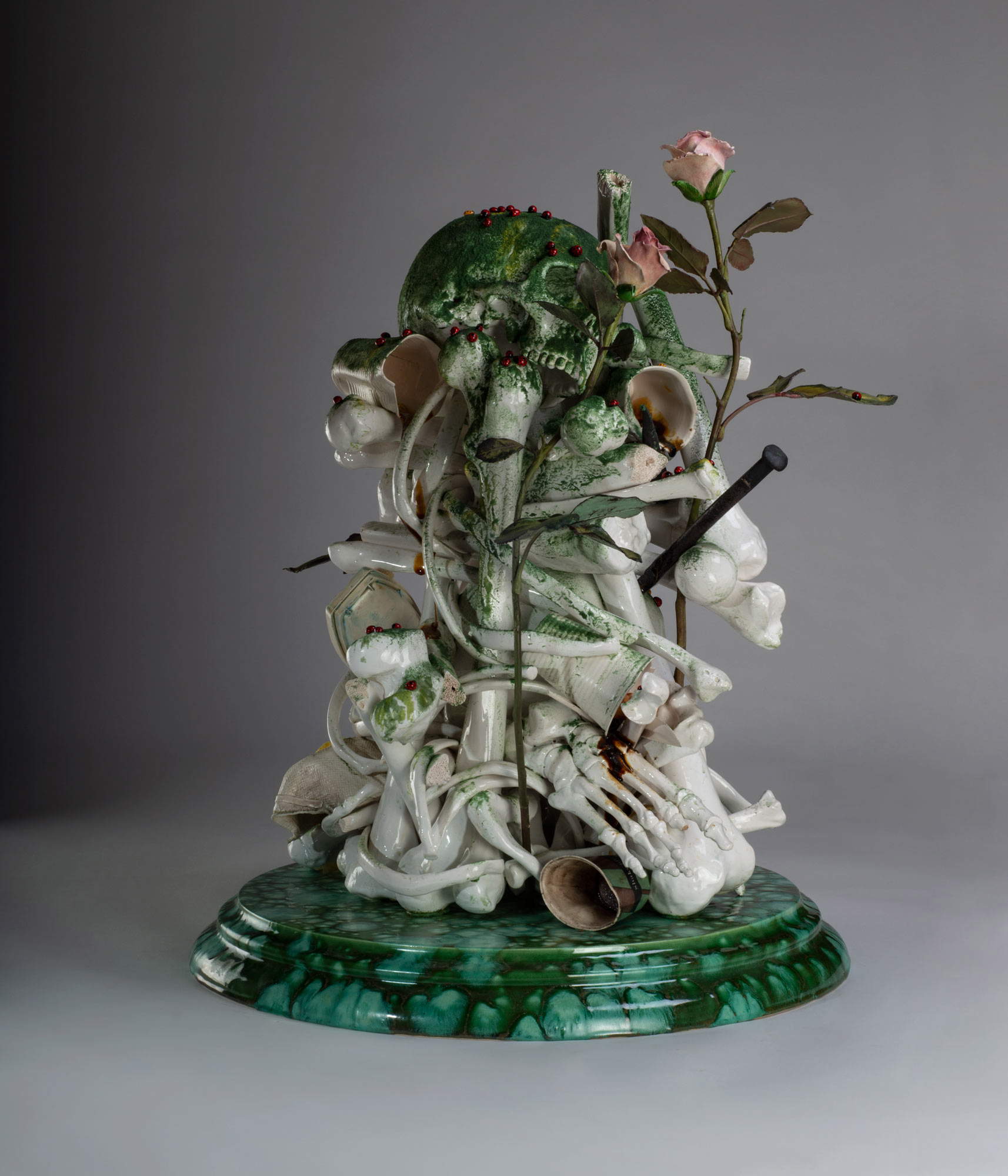 |
| Bertozzi & Casoni, Pensieri (2019; polychrome ceramic, 64 x 55 x 51 cm) |
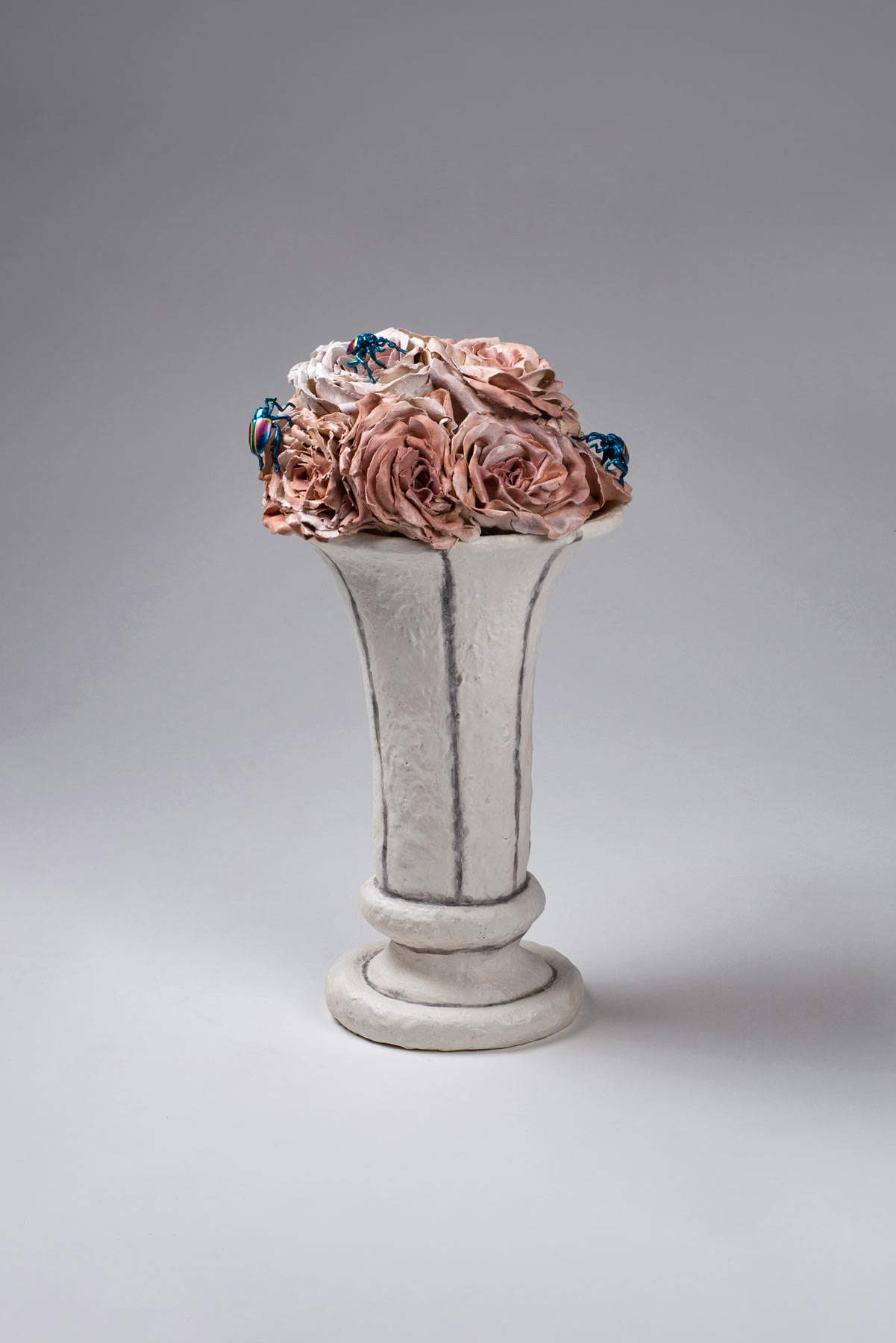 |
| Bertozzi & Casoni, Per Morandi (2019; polychrome ceramic, 36 x 20 x 18 cm) |
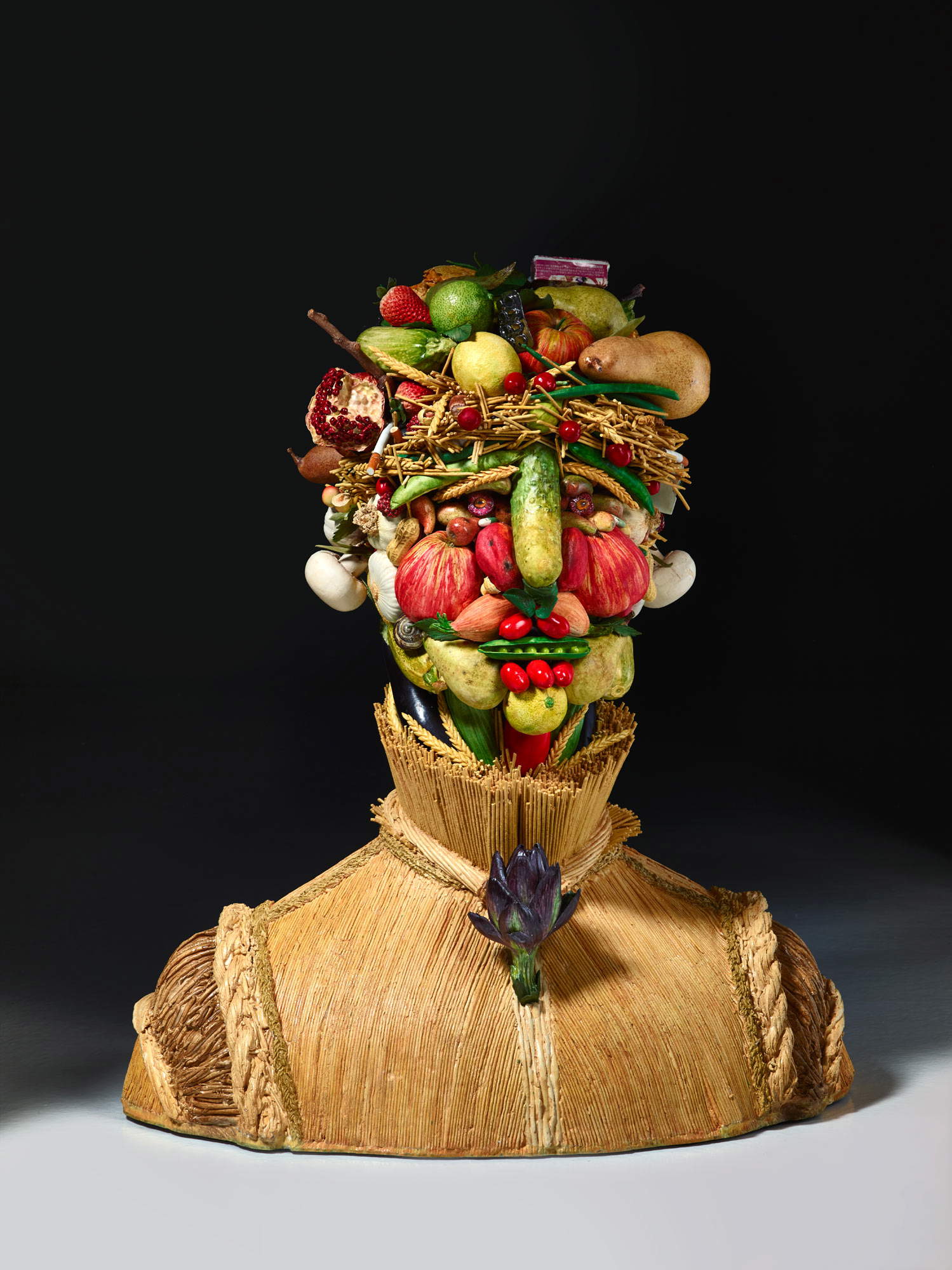 |
| Bertozzi & Casoni, Estate (2015; polychrome ceramic, 74 x 65 x 40 cm) |
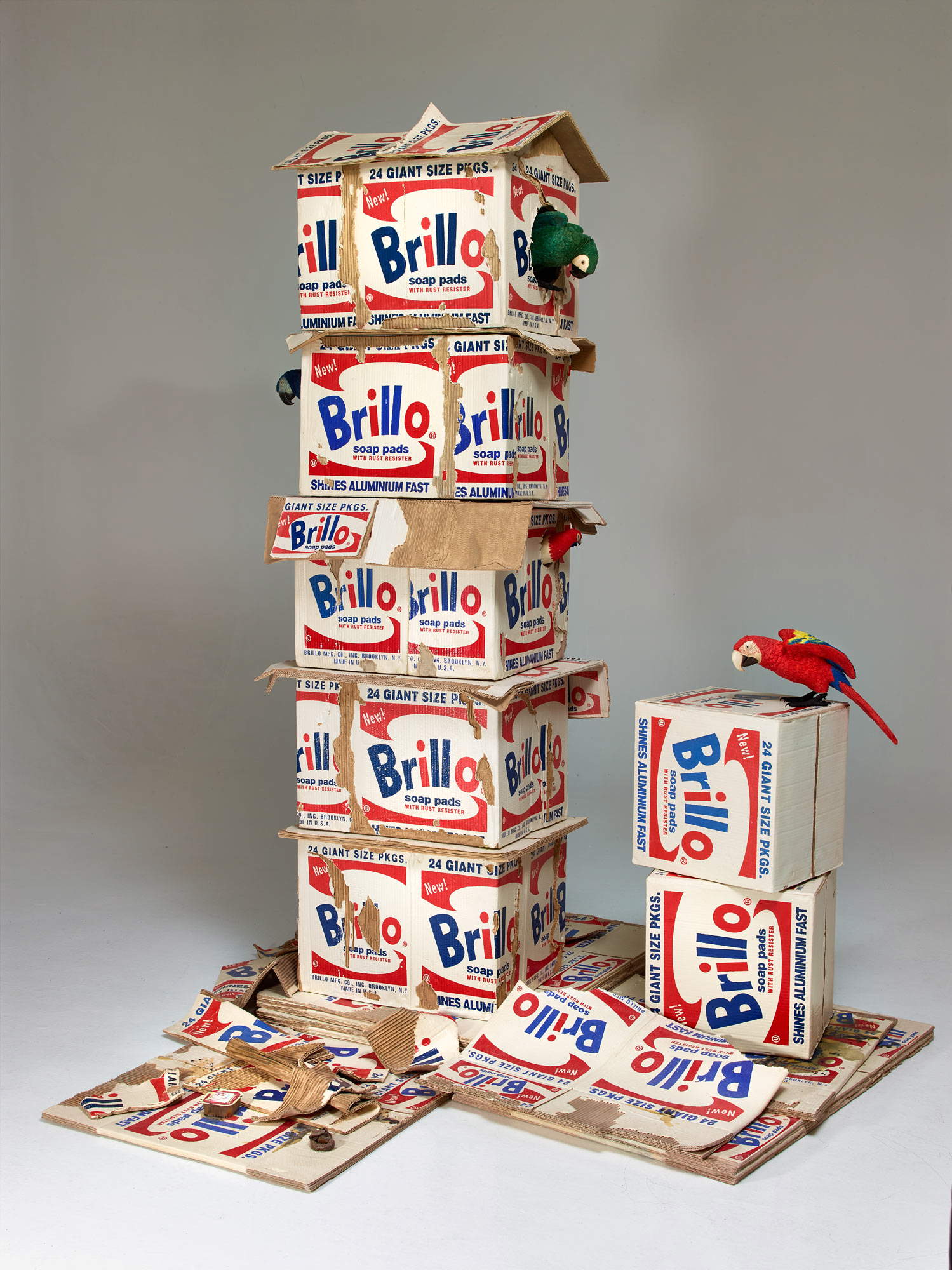 |
| Bertozzi & Casoni, Brillo box with parrots (2016; polychrome ceramic, 240 x 190 x 220 cm) |
 |
| Bertozzi & Casoni, Nothing is as it appears, detail (2018; polychrome ceramic, silvered bronze, steel, 100 x 50 x 50 cm) |
Then there is the topic of the relationship between man and nature, which in your works is a relationship that is often anything but harmonious: let’s say that between waste, waste of food and therefore of resources, animals in cages, nature does not come out well, in fact it comes out very scarred. What do you want to bring out?
Let’s be very clear, it is not ecological art, although we are sensitive to the problem. We look at the landfill with artist’s eyes: the abandoned can of tuna is an admirable object, of great artistic quality, of a great sensitivity of colors, of variations of tones, from the rust to the discoloration of the label, and so we take it as a plastic and pictorial example. We like to make our compositions with this in mind, thinking of giving a second life to this world that has fulfilled its first function, ordering objects into a composition. In our work, man never appears but what man leaves behind, his traces, appears. I myself surround myself with ordinary objects that nevertheless have their own fascination of construction, form, color. Even Duchamp, in 1912, when he went to visit the Paris Aviation Exhibition and saw the large propeller, was struck by this object, which was a product of human beings, not because of its artistic value, but because of the technique that had enabled man to make it. In fact, his was, in essence, an observation of what man does. I remember listening to Restany many years ago: he was talking about the bicycle wheel saying that the sign of the wheel is a timeless sign (a circle) and that Duchamp chose it not to talk about who knows what, but because it is a form that will remain eternal and always contemporary.
And this attention to the aesthetic and conceptual quality of even the simplest objects also explains your interest in Andy Warhol’s Brillo Boxes. And you, exactly as Andy Warhol did with the Brillo Boxes, do not insert objet trouvé into your works, but reconstruct objects. It happens especially in the accumulations with individual objects described with meticulous detail, which always arouse great curiosity in the viewer: what is the process that leads to the birth of one of your works?
It is a very long process, combining art and technique, things that for us are very close: “technique” for us means putting together the tools to give shape to ideas. The process starts from the found object, after which we reconstruct it entirely in the studio and make a model, then a mold, often they are silicone molds made so that they can give us back the object perfectly identical, or slightly changed but so that it is not too different. Every small object that is put in these accumulations comes from a process of modeling and molding (which can be manual or by casting or a mixture of the two techniques), then we go to firing (also of different types, because not all objects are fired at the same temperature and especially the colors are to be differentiated in the firings): some techniques are industrially derived, also because everything on the market is studied for large production. Our work has gone through two phases, the first was related to the traditional majolica, in the second phase we felt the need to cool our work by bringing it to be more objective.
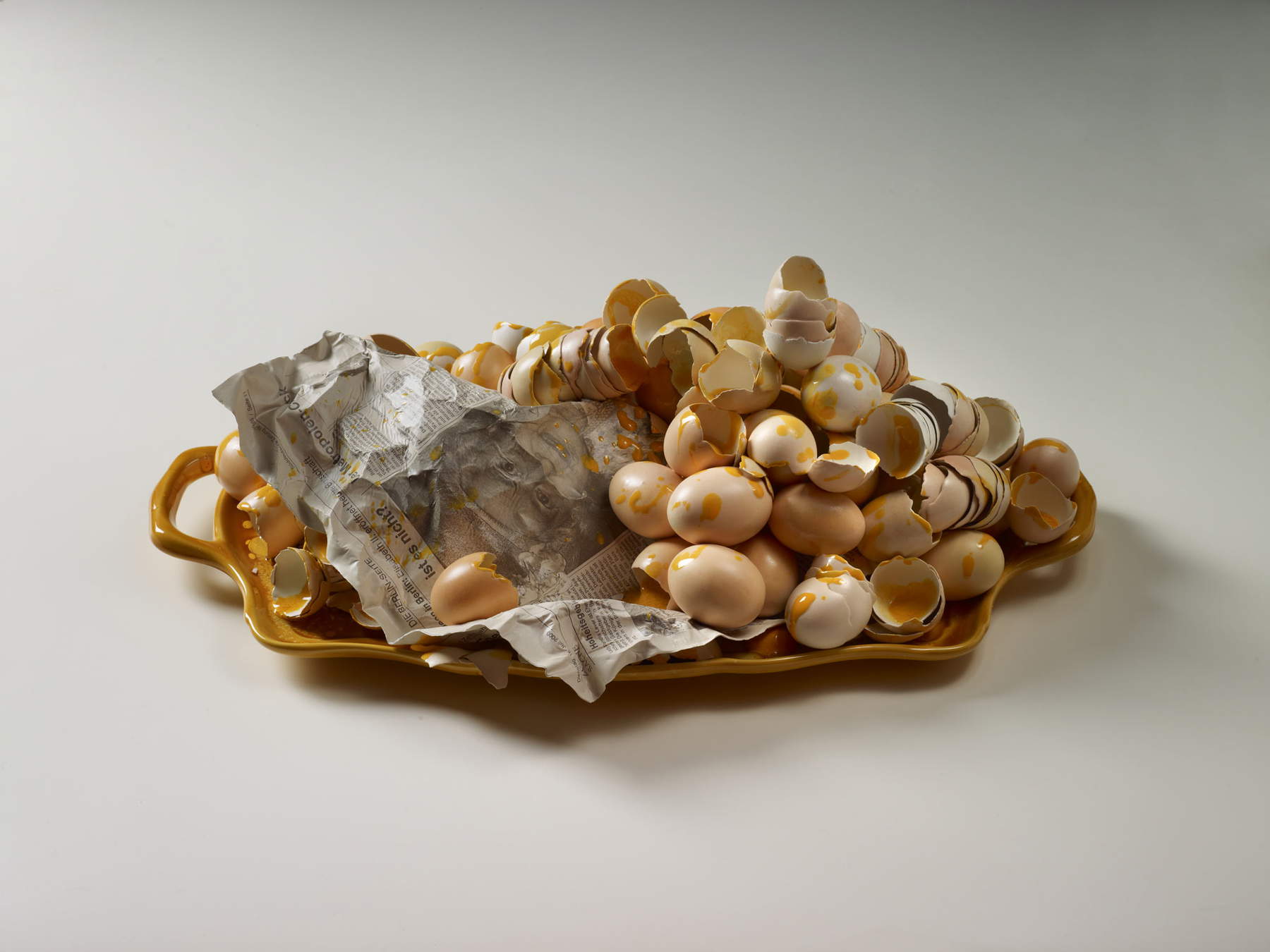 |
| Bertozzi & Casoni, Tray (2009; polychrome ceramic, 19 x 37.5 x 60 cm) |
 |
| Bertozzi & Casoni, Intervallo Oggi (2008; polychrome ceramic, 70 x 77 x 50 cm) |
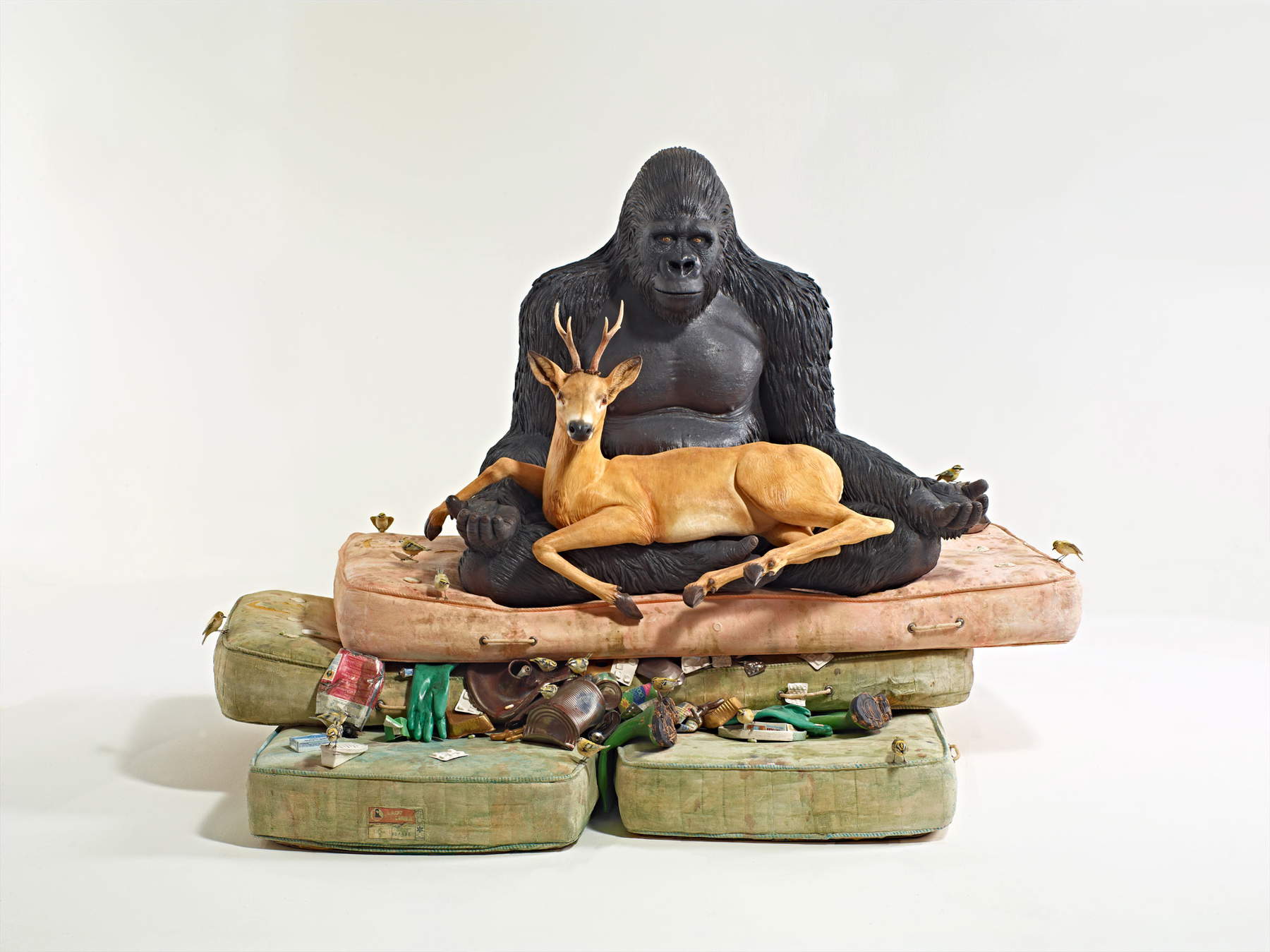 |
| Bertozzi & Casoni, Regeneration (2012; polychrome ceramic, 160 x 213 x 190 cm) |
Returning to the exhibition, the idea of the project is to convey to the viewer the perception that art can, in some way, redeem us. At the end of the visit, I read in the curator’s text, “the viewer leaves with the perception that, despite the difficult times in which we live, art and beauty will once again save us or at least redeem our ephemeral dimension.” What does this mean to you?
Art never gives answers, it always asks questions, it makes people think about issues that have always been the issues of man. It may help that art is one of those things that, if it is not there, human beings lack. Then we say that beauty will save us, but in reality it is something more, which I would not even know how to define: for example, I know of friends who have worked in war zones, who have told me that the thing that was most lacking in those contexts was art, even though they were not artists. Art is something that transcends our common everyday life, and sometimes it can be a refuge, an oasis of refreshment from the everyday. In my opinion, art (a book, a film, a documentary, a painting, a sculpture) is an oasis of peace, a space of freedom in which man finds himself well, I don’t know why, maybe philosophers could explain it better than I can: I know that I am well and I am refreshed if I watch a film, if I read a poem or a book. I think that’s the point.
One last question: yours is a very original, innovative, topical language. How has the pandemic affected your work? And do you think new realities, new trends will emerge from it?
On our work, as on everyone’s work, everything affects, because all the experiences that come to man on Earth, somehow mark us, are introjected. Maybe the results will not be immediately visible and around the corner, however, I believe that everything that comes somehow helps us and gives us inputs to do something new. And even these latest events will affect art, artists and their product, as it has been for everything: I think of the great masses that are moving around the planet, so many artists have been and are working on these issues, and will continue to do so. There are artists who record the contemporary more and artists who record it in a more particular way, not speaking directly about that issue but still addressing it. Because it is also true that often nothing is as it appears. Sometimes you see a work that, beyond appearances, carries within it what is there and what is to come.
Warning: the translation into English of the original Italian article was created using automatic tools. We undertake to review all articles, but we do not guarantee the total absence of inaccuracies in the translation due to the program. You can find the original by clicking on the ITA button. If you find any mistake,please contact us.